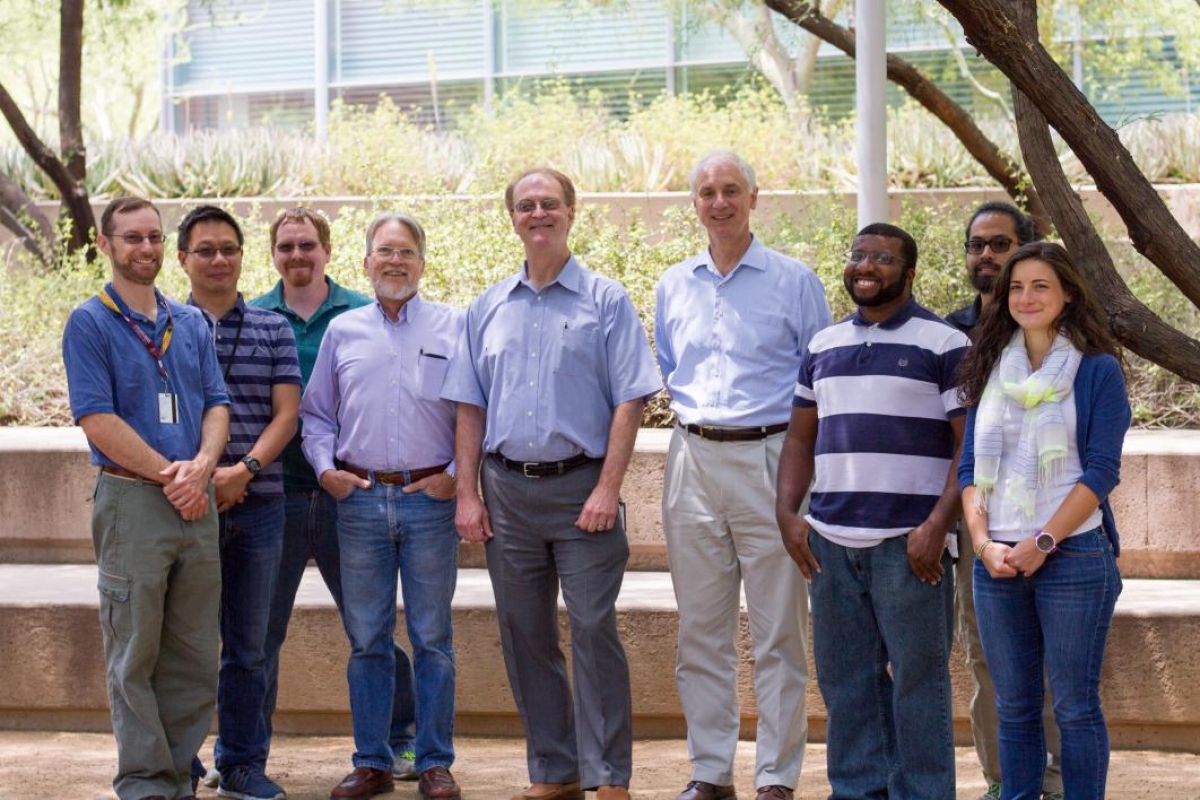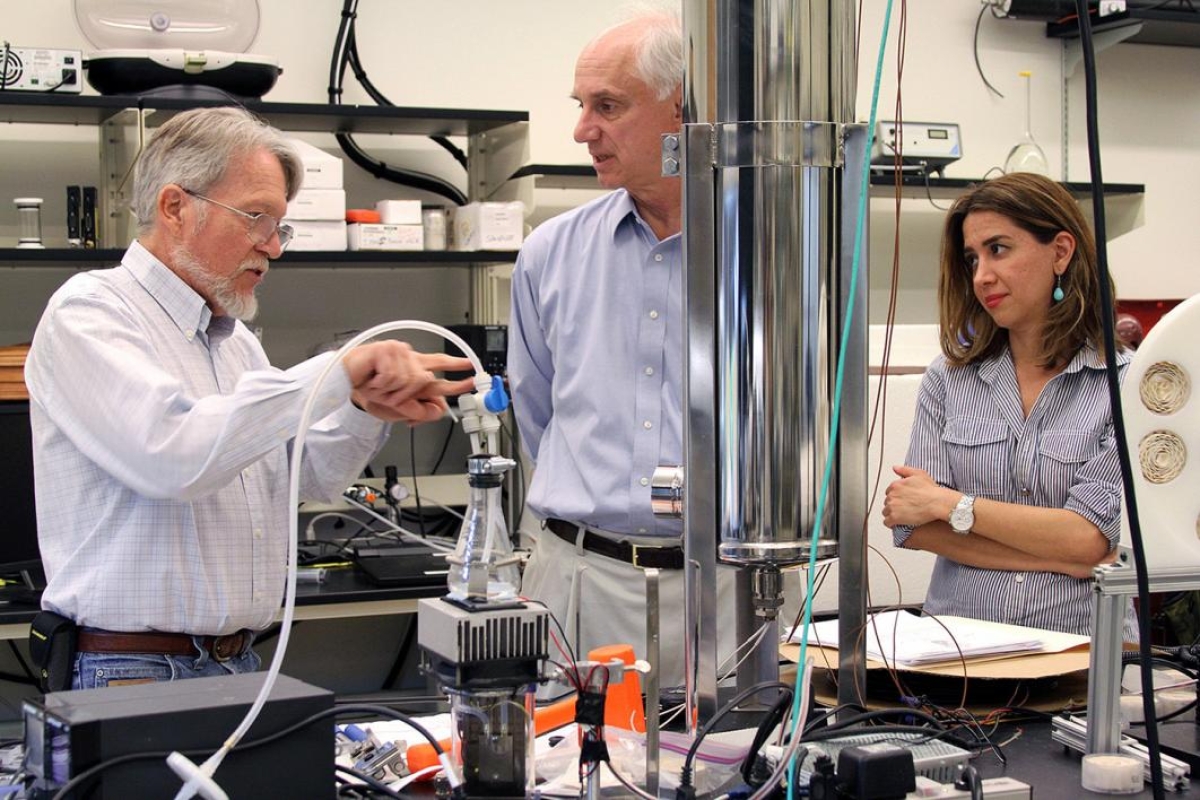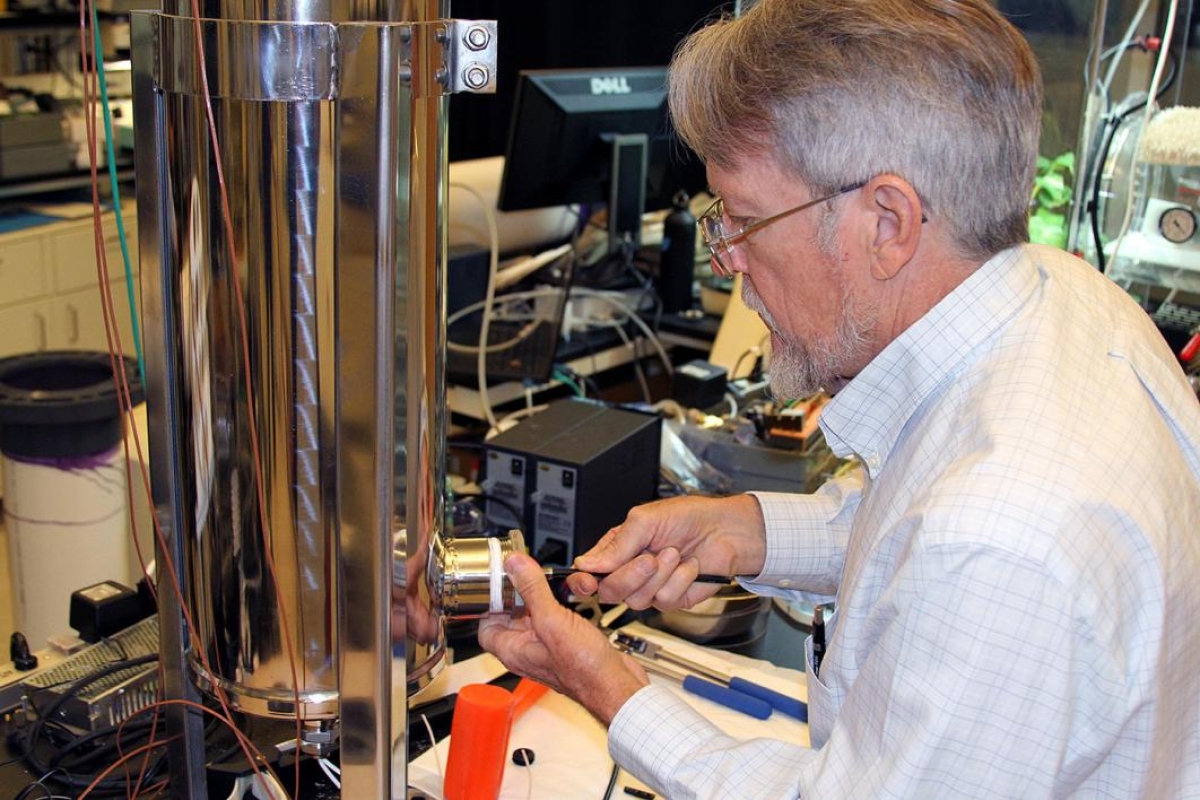ASU’s carbon capture, delivery technology garners algae industry award

Researcher Jason Kmon shows a small cross-section of the carbon capture materials that will go into making a large-scale prototype that will be tested this summer.
What if rather than using fossil fuels that add carbon dioxide, we could create renewable biofuels that recycle carbon dioxide from the atmosphere?
That’s the concept behind a new invention from Arizona State University researchers that recently garnered industry recognition as the “Gold Medal” Award Winner in the Laboratory Equipment Category from the Algae Industry Magazine’s 2017 International Readers’ Poll.
Klaus Lackner, teamed with Arizona State University Biodesign Institute engineer Bruce Rittmann to lead a new research project to aid U.S. Department of Energy (DOE) efforts to boost production of a promising source of clean, renewable energy.
“Our goal is to develop systems to make growing microalgae more affordable and sustainable and to produce it on scales large enough to meet growing demands in the United States and globally,” Rittmann said.
Lackner and Rittmann are professors of civil, environmental and sustainable engineering in the School of Sustainable Engineering and the Built Environment, one of ASU’s Ira A. Fulton Schools of Engineering.
Rittmann is director of the Swette Center for Environmental Biotechnology at ASU’s Biodesign Institute. Lackner is director of ASU’s Center for Negative Carbon Emissions.
In November 2015, the DOE awarded them with a three-year, $1 million grant to fund the Atmospheric Carbon Dioxide (CO2) Capture and Membrane Delivery project aimed at enabling more large-scale cultivation of microalgae.
Microalgae that can make biofuels grow best in the sunny, warm climate of the Southwest, but need a source of concentrated CO2 to grow. Think of them as fuels created out of thin air.
It starts with capturing existing carbon dioxide directly from the air.
“We’ve developed materials which have the feature that they can bind carbon dioxide,” Lackner said. “They are a little bit like leaves on a tree. As the air blows over those surfaces, the CO2 attaches itself to it.”
ASU’s Air Capture Technology collects carbon dioxide from the atmosphere using a technique that literally scrubs it from the air and then captures it so it can be reused at an affordable cost — a carbon dioxide recycling program.
How exactly can fuel be pulled from thin air? The materials work on a moisture cycle, attracting carbon dioxide from the air when they are dry, and then release it at an enriched concentration of CO2 when they become wet.
The enriched CO2 can be put to several uses, like feeding algae, that thrive on CO2. “Those algae, can then be used to make biofuels,” Lackner said. “You could have fuels without any petroleum.”
With CO2 levels at an all-time high of 400 parts-per-billion in the Earth’s atmosphere, the technology can also address the critical environmental need of CO2 reduction.
“In some ways, air capture is the capture of last resort, and I think that’s why the potential of this technology is so powerful,” Lackner said. “Give it a few years, and the technology will be fully demonstrated.”
The team is currently building the first prototype of the system to begin evaluating its performance over several months outdoors, first growing algae in a rooftop 75-liter photobioreactor, and second, in 1500-liter raceway ponds out at the Arizona Center for Algae Technology and Innovation (AzCATI) national testbed at ASU’s Polytechnic Campus.
“We are now poised to see how the technology fares outside of the laboratory, which is critical to identify areas we still need to improve to make the technology commercially viable,” Rittmann said.
And that could mean a huge “green” benefit, for the economy and environment.
More Science and technology

Hack like you 'meme' it
What do pepperoni pizza, cat memes and an online dojo have in common?It turns out, these are all essential elements of a great…

ASU professor breeds new tomato variety, the 'Desert Dew'
In an era defined by climate volatility and resource scarcity, researchers are developing crops that can survive — and thrive —…

Science meets play: ASU researcher makes developmental science hands-on for families
On a Friday morning at the Edna Vihel Arts Center in Tempe, toddlers dip paint brushes into bright colors, decorating paper…




